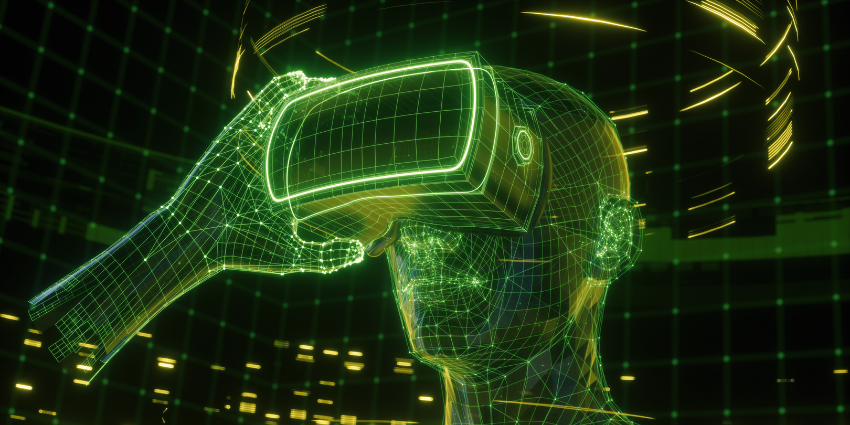
Reinventing the Future: How NVIDIA’s Vision is Quietly Shaping Tomorrow’s World
NVIDIA’s journey from gaming graphics to powering AI supercomputers reveals how quiet innovation, risk-taking, and parallel processing reshaped our digital world. With CUDA, GPUs, and foundation models, NVIDIA has become the unseen force behind tomorrow’s most powerful technologies—from medical imaging to robotics and AI PCs.
The extraordinary evolution of NVIDIA—from gaming upstart to global AI powerhouse. By tracing pivotal decisions, unexpected detours, and visionary gambles, readers will discover how parallel processing shifted industries, how CUDA unlocked creative chaos, and how ideas like GeForce RTX 50 and Project DIGITS are laying the track for a tech-fueled future. Drawing on rare insights and milestones, the post invites optimists, skeptics, and dreamers alike to see what might come next when belief meets bold innovation.
Some revolutions start with a bang—others with a single, stubborn belief. I still remember accidentally stumbling across a 15-year-old Mythbusters video where a robot fired paintballs at breakneck speed—supposedly to explain parallel vs. sequential processing. It was hilarious, almost absurd. But that visual stuck with me, the same way NVIDIA’s journey—full of unglamorous setbacks and flashes of mad optimism—somehow sticks with anyone paying close enough attention. Let’s trace an unlikely arc from ‘90s video games to AI supercomputers and see how faith, frustration, and a geeky love of virtual worlds ended up shaking the world as we know it.
Start With Games, End With the World: NVIDIA, Parallel Processing, and the Great Leap
In the early 1990s, video games were pushing the limits of what computers could do. Developers dreamed of more realistic graphics, but the hardware just couldn’t keep up with the complex math required to make those digital worlds come alive. It was in this environment that NVIDIA began its journey, not as a household name, but as a small company with a big idea: what if the bottleneck wasn’t the software, but the way computers processed information?
The insight was deceptively simple. As NVIDIA’s founders observed, inside any software program, only about 10% of the code was responsible for 99% of the heavy lifting. That 99%—the real work—could be done in parallel. The rest, the remaining 90%, had to be done step by step, in sequence. The perfect computer, they realized, would combine both: sequential and parallel processing, not just one or the other.
This foundational observation set NVIDIA on a path to build a new kind of processor. The result was the modern GPU, a chip designed to handle many calculations at once. It was a solution that would change not just games, but the entire world of computing.
From Mythbusters to Mainstream: GPU vs CPU Explained
For many, the difference between a CPU and a GPU was hard to grasp until NVIDIA made it visual. In a now-famous video on the company’s YouTube channel, the MythBusters team used robots to illustrate the concept. One robot fired paintballs one at a time—just like a CPU, solving problems sequentially. Then came the GPU: a massive robot that launched dozens of paintballs at once, tackling many smaller problems in parallel). Suddenly, the power of parallel processing clicked for millions.
This demonstration wasn’t just a clever marketing move. It highlighted why gaming was the perfect proving ground for GPUs. Video games, especially those with 3D graphics, demand enormous amounts of parallel processing to render lifelike scenes in real time. NVIDIA’s GeForce RTX 50 Series, built on the advanced Blackwell Architecture, continues this tradition, delivering up to 2x performance improvements and introducing new AI-driven rendering technologies.
Gaming and AI PC: The Accidental Revolution
Why did NVIDIA focus on gaming first? The answer is part passion, part pragmatism. As the company’s founders put it, they loved the idea of virtual worlds—and saw that video games could become the largest entertainment market ever. This wasn’t just wishful thinking. Gaming’s explosive growth provided the revenue, and the market size needed to fund ambitious R&D. In Q4 alone, NVIDIA’s gaming revenue reached $2.5 billion, with full-year gaming revenue climbing to $11.4 billion, despite a 22% dip from the previous quarter.
This “flywheel” effect—where a large market funds better technology, which in turn grows the market—helped NVIDIA become a global tech powerhouse. But the story doesn’t end with entertainment. The same parallel processing power that made games more immersive is now driving breakthroughs in AI PCs, medical imaging, robotics, and scientific research. As research shows, parallel processing, once a niche for gamers, is now a cornerstone of modern computing.
Beyond the Game: The World NVIDIA Built
Today, NVIDIA’s technology powers far more than just gaming and AI PCs. The company’s innovations in the GeForce RTX 50 Series and Blackwell Architecture are enabling new applications in digital humans, content creation, and productivity tools. NVIDIA’s dominance in the enterprise AI chip market—holding an estimated 80% share—underscores how its roots in gaming have quietly shaped the future of everything from autonomous vehicles to medical research.
A GPU is like a time machine because it lets you see the future sooner. – Jensen Huang
What began as a quest to make video games more realistic has become a driving force behind the world’s most advanced AI and scientific computing. The leap from gaming to global innovation wasn’t planned, but it was inevitable. As NVIDIA’s story shows, sometimes the biggest revolutions start with a simple observation—and a love of play.
The CUDA Gamble: Letting Everyone Steer the Ship
For years, researchers who wanted to harness the raw power of graphics processing units (GPUs) for scientific or non-visual tasks had to get creative—sometimes even “tricking” the hardware into doing their bidding. It was a world of hacks and workarounds, far from user-friendly. But in 2006, NVIDIA made a bold move that would quietly reshape the future: the launch of CUDA, a platform that let programmers use familiar languages like C to tap directly into GPU muscle.
This was more than just a technical upgrade. CUDA’s arrival meant that suddenly, everyone—from academic researchers to app developers—could play. No more obscure tricks. No more barriers to entry. As NVIDIA’s Jensen Huang famously put it:
If you build it, they might not come. But if you don’t build it, they can’t come.
The vision behind CUDA was born from a mix of inspiration, necessity, and a bit of desperation. Internally, NVIDIA engineers were grappling with the challenge of making virtual worlds for video games more dynamic and realistic. They wanted water to flow like real water, explosions to behave like true particle physics. But the existing graphics pipeline was limited. Externally, researchers at institutions like Massachusetts General Hospital were already experimenting with GPUs for medical imaging—using them to reconstruct CT scans faster and more efficiently. These parallel threads of innovation converged, sparking the idea for a platform that could empower developers across disciplines.
NVIDIA’s gamble was to put the entire company behind CUDA. Why? The answer was simple: gaming. With the video game market driving massive GPU volumes, NVIDIA’s architecture had a real shot at reaching millions. If CUDA could ride that wave, it would democratize access to parallel computing power on an unprecedented scale.
And democratize it did. CUDA opened the doors for ordinary developers to leverage the kind of parallel processing once reserved for supercomputers. Suddenly, innovation wasn’t limited to elite labs or massive budgets. Anyone with a compatible GPU could experiment, iterate, and create. This shift laid the foundation for a surge in AI research, digital content creation, and even robotics.
- Empowering Developers: By letting programmers use languages they already knew, CUDA made high-performance computing accessible to a much broader audience.
- AI Foundation Models: The platform’s flexibility fueled the rise of AI foundation models, enabling breakthroughs in natural language processing, image recognition, and more.
- Medical Imaging AI: In healthcare, CUDA-powered GPUs became the backbone of advanced medical imaging solutions. Siemens Healthineers, for example, leveraged this technology to accelerate diagnostics and improve patient outcomes.
- NVIDIA NIM Microservices: Building on CUDA’s legacy, NVIDIA has launched NIM microservices to streamline AI agent development and application security, further expanding the ecosystem.
Research shows that CUDA’s impact has only grown with time. NVIDIA now holds an estimated 80% share of the enterprise AI chip market, a testament to the platform’s dominance and versatility. The company’s recent expansion into Vietnam with its first R&D center signals a commitment to bringing AI innovation to new regions, while partnerships in medical imaging AI continue to push the boundaries of what’s possible.
The ripple effects of CUDA’s launch are visible across industries. In content creation, artists and developers use GPU acceleration for everything from real-time rendering to digital humans. In productivity tools, CUDA’s parallelism speeds up data analysis and visualization. And in robotics, the same technology powers autonomous vehicles and smart factories.
But it’s worth remembering that none of this was guaranteed. As Huang’s quote suggests, innovation often means taking a leap of faith. “If you build it, they might not come. But if you don’t build it, they can’t come.” CUDA was that leap—a calculated risk that, in hindsight, seems almost inevitable. Yet at the time, it was a “huge if true” proposition. Would developers embrace it? Would the market respond?
Today, the answer is clear. CUDA didn’t just empower developers—it let everyone steer the ship. And in doing so, it quietly set the stage for the AI-driven world we’re now beginning to inhabit.
From AlexNet to AI Everywhere: When Hope Meets Hardware
In 2012, a seismic shift rippled through the world of artificial intelligence. At the heart of it was AlexNet—a neural network that stunned the field by dominating a prestigious image recognition competition. The secret behind its leap? Not just clever algorithms, but the raw parallel power of NVIDIA GPUs and the CUDA programming model. Suddenly, graphics cards weren’t just for gamers. They were the engines of a new era in computing, where machines learned from examples instead of following rigid instructions.
This moment, now legendary in tech circles, marked the dawn of the AI Supercomputers age. Researchers like Ilya Sutskever, Alex Krizhevsky, and Geoff Hinton at the University of Toronto saw in NVIDIA’s GeForce GTX 580 and CUDA a chance to push boundaries. Their gamble paid off, and AlexNet’s victory became a beacon for what was possible when hope meets hardware.
NVIDIA’s leadership, led by CEO Jensen Huang, recognized the magnitude of this breakthrough. As Huang later reflected, “When you create something new like CUDA, if you build it, they might not come. But if you don’t build it, they can’t come”. It was a strategy rooted in optimism and a belief in the potential of parallel computing. Internally, NVIDIA was already wrestling with computer vision challenges, trying to make CUDA a viable engine for these new workloads. The success of AlexNet validated their efforts and inspired a bold question: how far could this new approach go?
The answer, it turns out, was transformative. NVIDIA doubled down, re-engineering its entire computing stack to support the coming wave of AI. The result was the birth of the DGX line of AI Supercomputers, purpose-built for deep learning and foundation models. This “parallel faith” soon fueled advances not just in image recognition, but in speech, language, robotics, and autonomous systems. The company’s vision expanded: AI would not just live in the cloud, but everywhere—from data centers to personal devices.
Fast forward to 2025, and the numbers tell the story. NVIDIA reported a record Q4 revenue of $39.3 billion, up 78% year-over-year—growth powered by AI and data center demand. The company’s innovations now reach every corner of the industry. The GeForce RTX 50 Series, built on the Blackwell architecture, delivers up to 2x performance improvement and introduces AI-driven rendering technologies like DLSS 4 and Reflex 2, slashing latency for gamers and creators alike. Meanwhile, the Project DIGITS Supercomputer brings the power of AI Foundation Models and on-device intelligence to the edge, enabling personal supercomputing for the first time.
Research shows that NVIDIA’s dominance is not just about hardware. The company has rolled out AI Blueprints, NIM microservices, and open-source tools to help developers build secure, energy-efficient, and privacy-conscious AI applications. Partnerships with leaders in medical imaging, robotics, and autonomous vehicles are pushing the boundaries of what’s possible. In fact, NVIDIA now commands an estimated 80% share of the enterprise AI chip market, even as rivals like Intel, AMD, and Qualcomm scramble to catch up.
The ripple effects are everywhere. AI Foundation Models trained on NVIDIA’s supercomputers are powering digital humans, content creation, and productivity tools on RTX PCs. Robotics and autonomous systems are becoming safer and more capable. And with Project DIGITS, the promise of AI everywhere—on-device, at the edge, and in the cloud—is becoming reality.
He said, Jensen, because of NVIDIA’s work, I can do my life’s work in my lifetime. That’s time travel.
— Jensen Huang
The journey from AlexNet’s surprise victory to today’s AI-driven world is a testament to the power of vision, risk-taking, and relentless innovation. NVIDIA’s story is not just about chips and code, but about reshaping the future—quietly, steadily, and with a sense of hope that continues to inspire the next generation of breakthroughs.
TL;DR: NVIDIA’s bold bets—from game graphics to AI PCs—and willingness to reimagine every piece of the computing puzzle have unknowingly touched your life. Their story is a case study in how faith-driven innovation can quietly change the course of technology, one wild experiment at a time.
AIFoundationModels, AIAdvancing, NVIDIANIMMicroservices, GamingAndAIPC, ProjectDIGITSSupercomputer, GeForceRTX50Series, AIPC, AISupercomputers, NVIDIABlackwellArchitecture, NVIDIAAIBlueprints,NVIDIAGPUs, parallelprocessingtechnology, CUDAplatform, JensenHuangvision, gamingtoAItransition, AIsupercomputers, RTX50series, GeForceBlackwell, AIfoundationmodels, CUDfordevelopers
#GamingAndAIPC, #AISupercomputers, #NVIDIANIMMicroservices, #GeForceRTX50Series, #NVIDIAAIBlueprints, #AIPC, #AIAdvancing, #NVIDIABlackwellArchitecture, #ProjectDIGITSSupercomputer, #AIFoundationModels,#NVIDIA, #CUDA, #GPUs, #ParallelProcessing, #JensenHuang, #AIInnovation, #RTX50, #AIComputing, #TechRevolution

